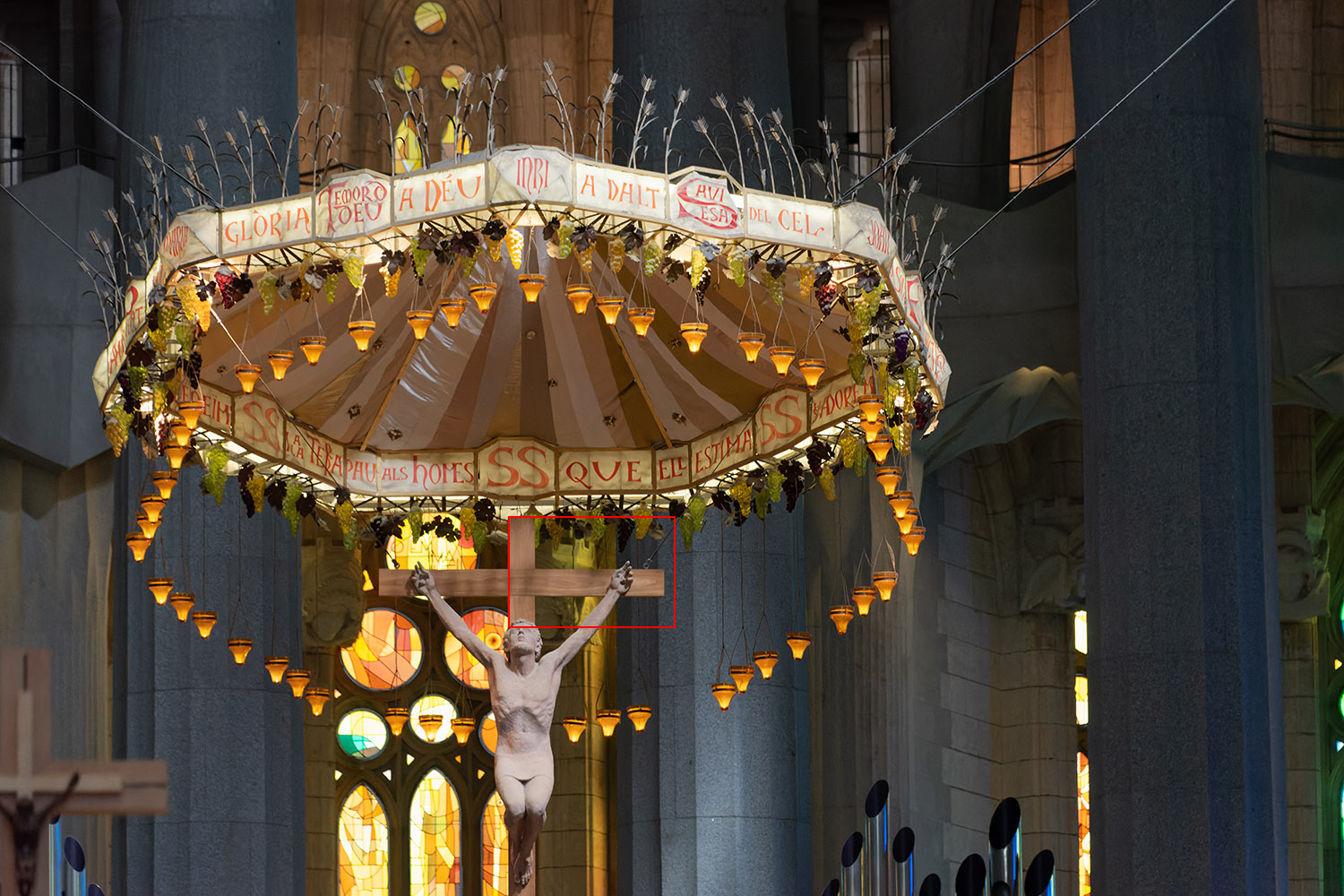
Shortly after purchasing my first dSLR (a Nikon D70 in 2004) I discovered DxO, a French company specialized in photography software. What caught my eye at the time was that their photo editing application, Optics Pro, used a concept that was new back then: the software read camera and lens information from the Exif data embedded in picture files by digital cameras to automatically correct distortion, color fringing, vignetting, and sharpness issues for given camera and lens combinations. In order to do this, the software required a module for each camera and lens combination; these modules were made available free of charge to users of DxO's software.
For quite some time, Optics Pro (renamed PhotoLab in 2017) was my favorite raw converter. Because I had modules for all my camera and lens combinations, the software simply worked better than anything else I tried. In September of 2019 I downsized to the Fujifilm X system, and while I do not regret this in the least, my new camera's X-Trans sensor is not (yet?) supported by DxO, so I have to turn to other solutions. In the meantime, I can still rely on PhotoLab to process my Nikon raw files. Incidentally, modules are only required for working with raw files; any JPEG or TIFF file can be processed with PhotoLab.
In the fall of 2020, DxO made the best raw converter even better by introducing PhotoLab 4 with DeepPRIME, a technology that merges raw conversion and noise reduction into a single step. Although there are many more new features and improvements in version 4 of PhotoLab, I want to look only at DeepPRRIME on this page. A word about methodology: I opened each of the five sample raw files in PhotoLab 4 with four different noise reduction settings (None, HQ, PRIME, and DeepPRIME). The results were exported as DNG files, and from these I chose the comparison area (shown as a color rectangle in the overall image) and produced the 100% crops. If you want to do this yourself, you may download the original raw file by clicking on the fist image in each of the five examples.
The first example is a photo taken during our May 2016 visit to the Sagrada Família in Barcelona. I shot in raw, underexposing the image by ⅔ of a stop with my Nikon D750. This camera is excellent in low light, so I was not afraid to let the ISO go up to 9000 to keep the aperture and shutter speed I wanted. To put this in perspective, the camera's base ISO is 100, so we're 6½ stops away from that. To those who started out with film, as I did, this is almost incomprehensible.

|
Sagrada Família, Barcelona, May 2016 |
ISO 9000 ● 1/250 ● ƒ/8.0 ● 250mm ● Exp. -⅔ |
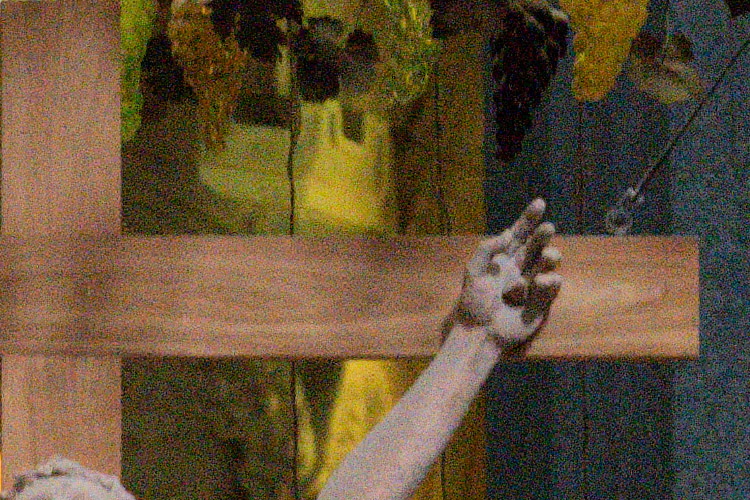
|
100% crop of raw file opened in PhotoLab 4 without noise reduction |
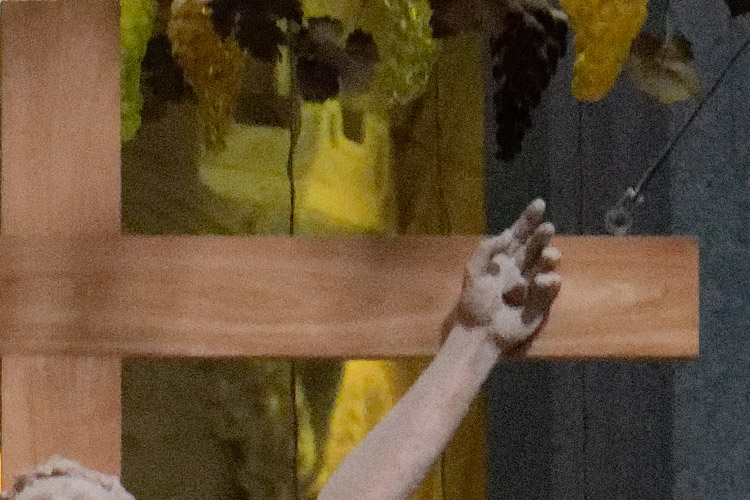
|
100% crop of raw file opened in PhotoLab 4 with HQ noise reduction |
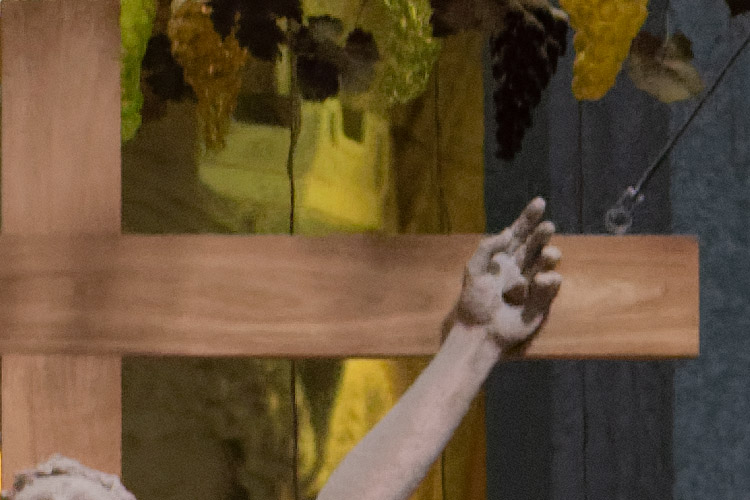
|
100% crop of raw file opened in PhotoLab 4 with PRIME noise reduction |
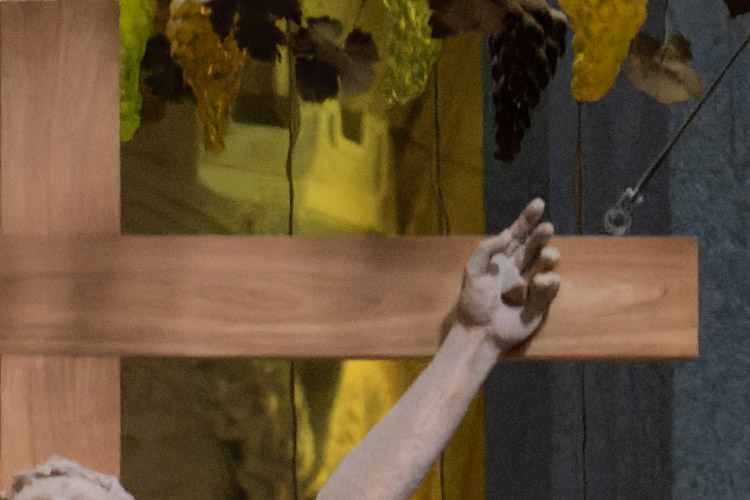
|
100% crop of raw file opened in PhotoLab 4 with DeepPRIME noise reduction |
I took this photograph during our October 2016 canyon trip to the American southwest. You may be wondering why on Earth I was using ISO 10000 outdoors during the day. Well, for one thing, at 4:30 p.m. in October it was pretty dark at the bottom of the canyon, much darker than it seems in the photo, and I didn't want too shallow a depth of field nor too slow a shutter speed as I was shooting at 300mm, so I let the ISO go high. This is 6⅔ stops from base ISO, so once again, it's rather impressive. I never did go higher than that with the D750.
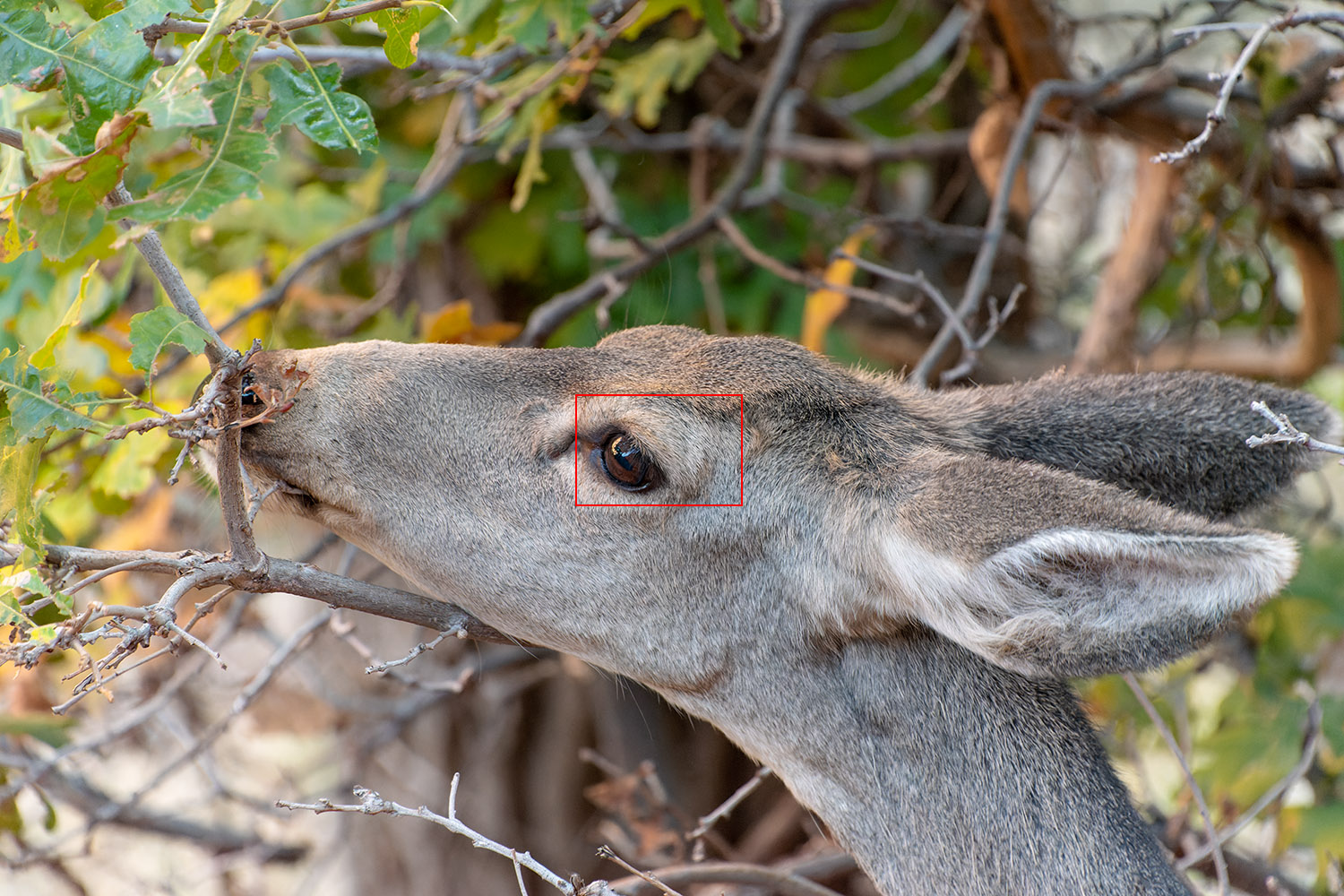
|
Mule Deer, Zion National Park, October 2016 |
ISO 10000 ● 1/320 ● ƒ/7.1 ● 300mm |
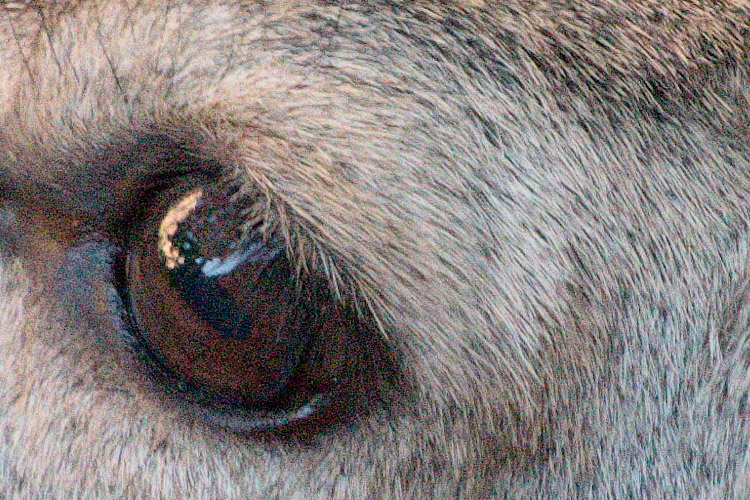
|
100% crop of raw file opened in PhotoLab 4 without noise reduction |
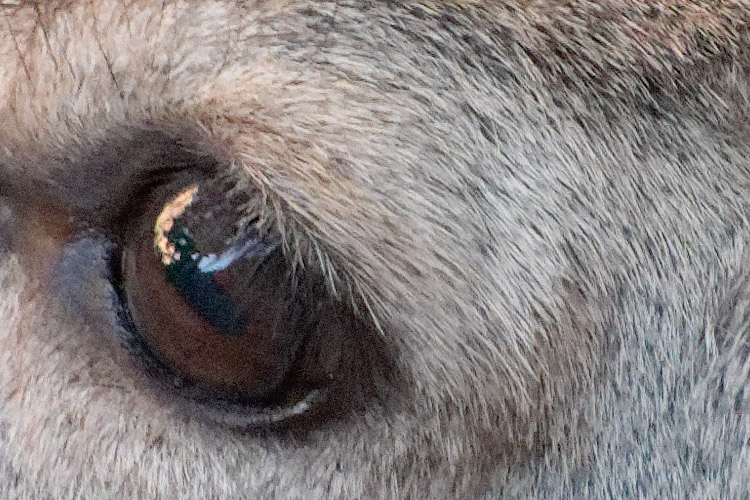
|
100% crop of raw file opened in PhotoLab 4 with HQ noise reduction |
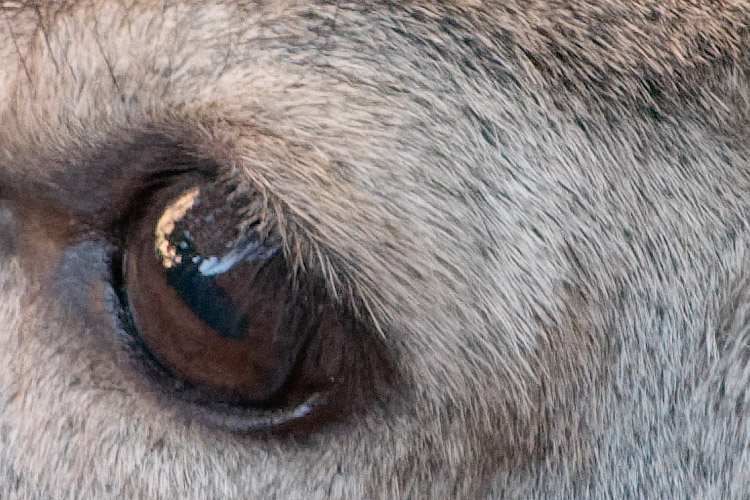
|
100% crop of raw file opened in PhotoLab 4 with PRIME noise reduction |
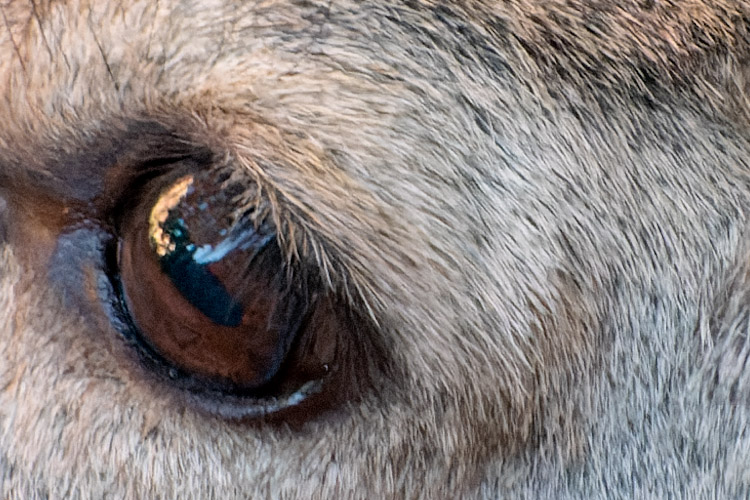
|
100% crop of raw file opened in PhotoLab 4 with DeepPRIME noise reduction |
High above the old harbor of Marseille towers the magnificent Notre Dame de la Garde basilica which I visited in January of 2017. The image below was taken on that occasion. It was extremely dark in the crypt; the only light came from a number of votive candles. Even so, I underexposed by a full stop so that the camera would not render the scene too brightly. I chose an area with both text and bright light for the comparison; The PRIME noise reduction is already amazingly good, but in this image, the improvements made by DeepPRIME are particularly apparent: the text is noticeably sharper and the noise above the second candle from the right is better managed. This is probably the example that shows the DeepPRIME improvements best.
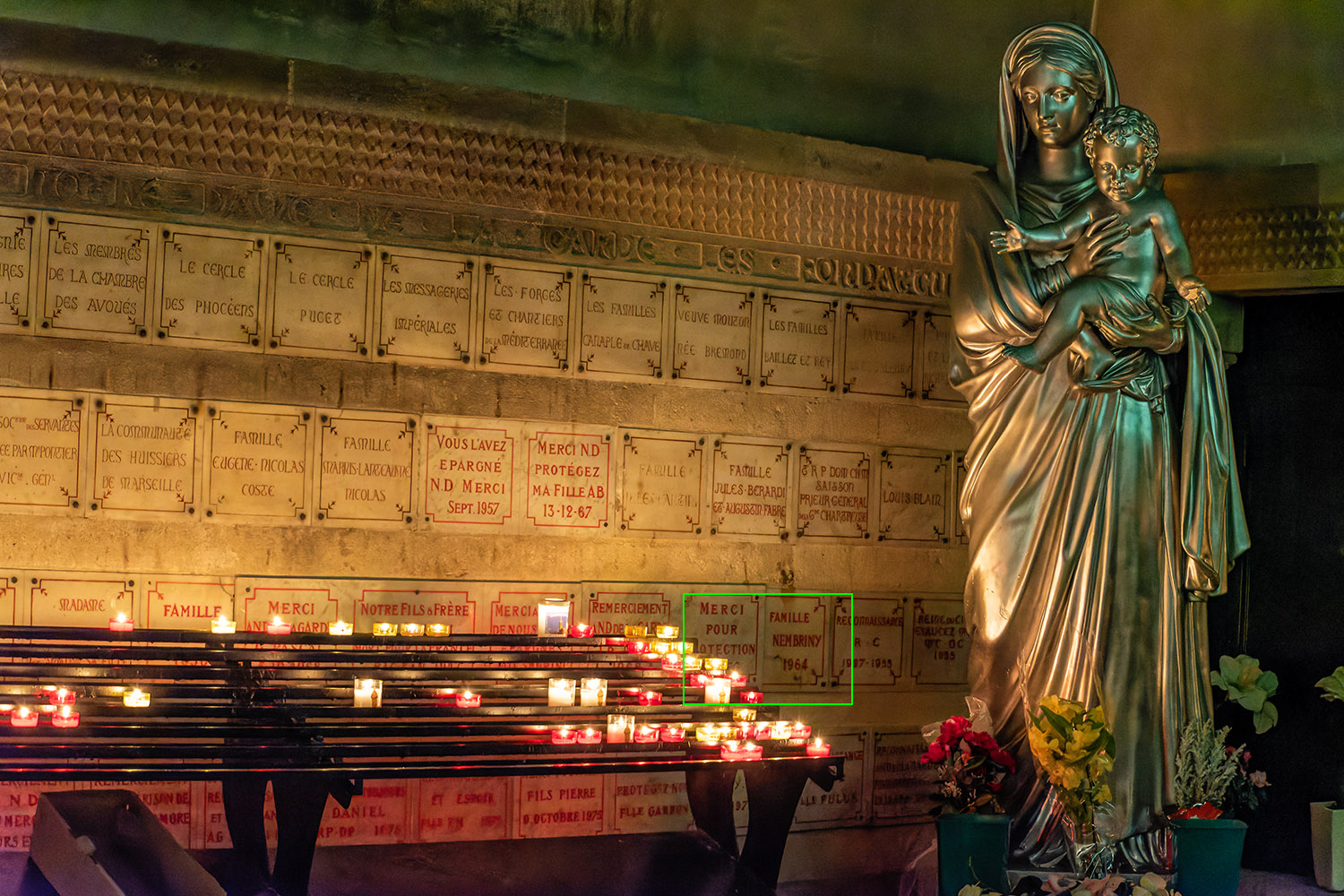
|
Notre Dame de la Garde, Marseille, January 2017 |
ISO 10000 ● 1/50 ● ƒ/5.6 ● 68mm ● Exp. -1 |
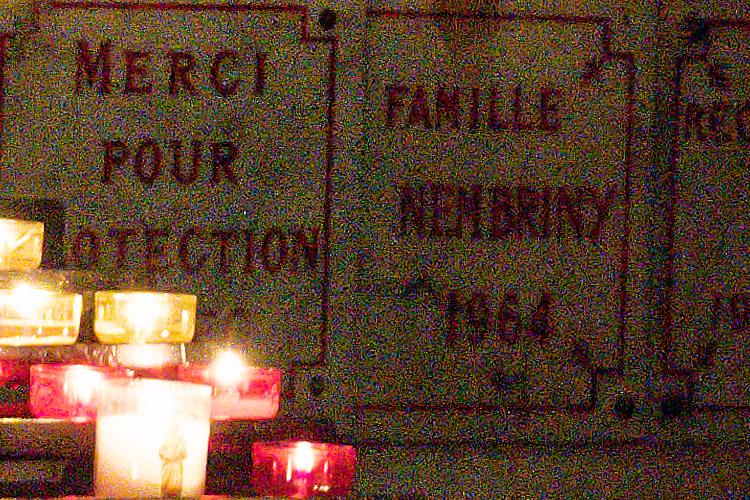
|
100% crop of raw file opened in PhotoLab 4 without noise reduction |
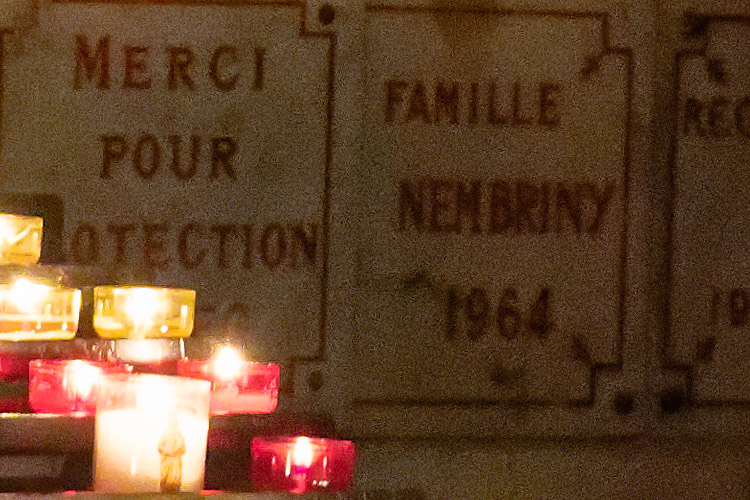
|
100% crop of raw file opened in PhotoLab 4 with HQ noise reduction |
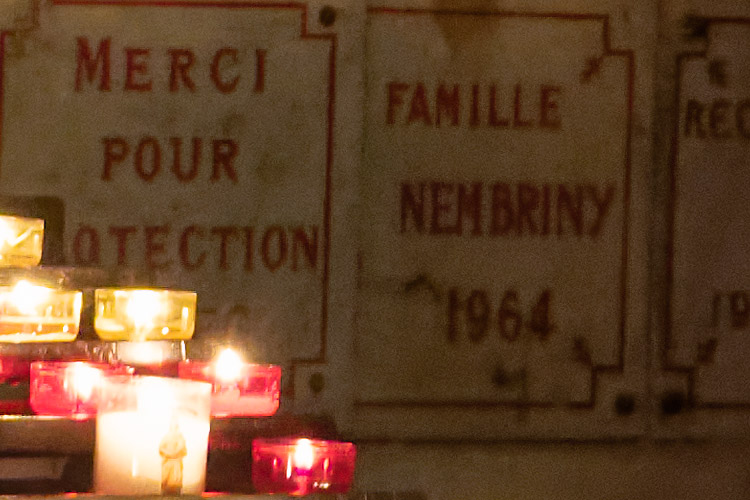
|
100% crop of raw file opened in PhotoLab 4 with PRIME noise reduction |
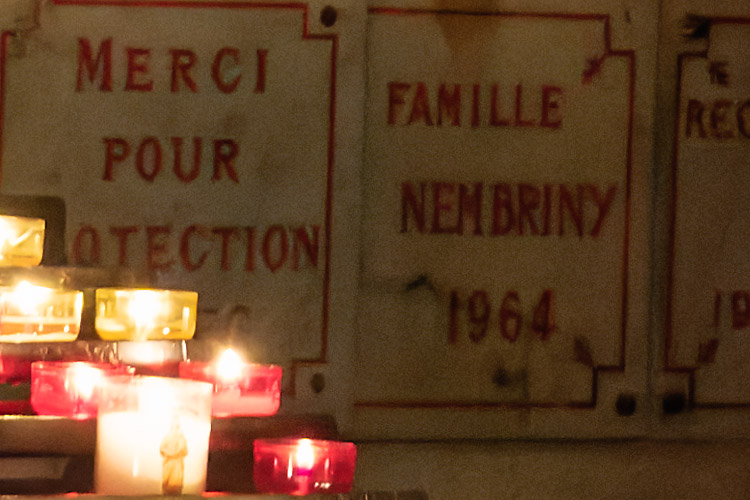
|
100% crop of raw file opened in PhotoLab 4 with DeepPRIME noise reduction |
In a different part of the crypt, there is a chapel where the beautiful statue Virgin with Child and Bouquet stands on the altar. As with most other photographs on this page, the scene was much darker than one would think looking at the photo, even though I underexposed the shot by 1⅓ stops. Here, too, the advantages of DeepPRIME are evident, especially around the bouquet where the PRIME noise reduction has created a few artifacts that are absent in the DeepPRIME version.
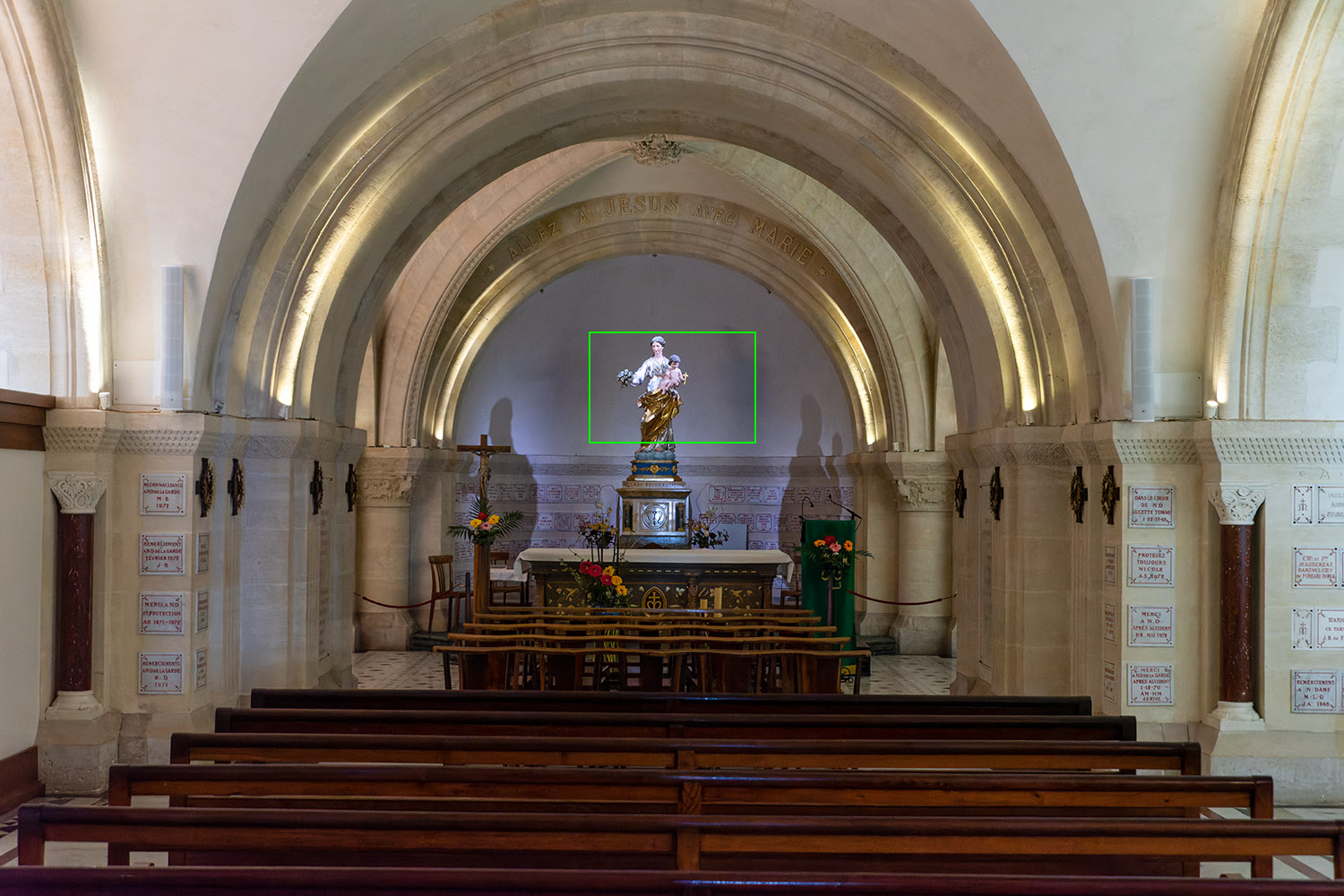
|
Virgin with Child and Bouquet in the crypt, Marseille, January 2017 |
ISO 10000 ● 1/30 ● ƒ/5.6 ● 48mm ● Exp. -1⅓ |
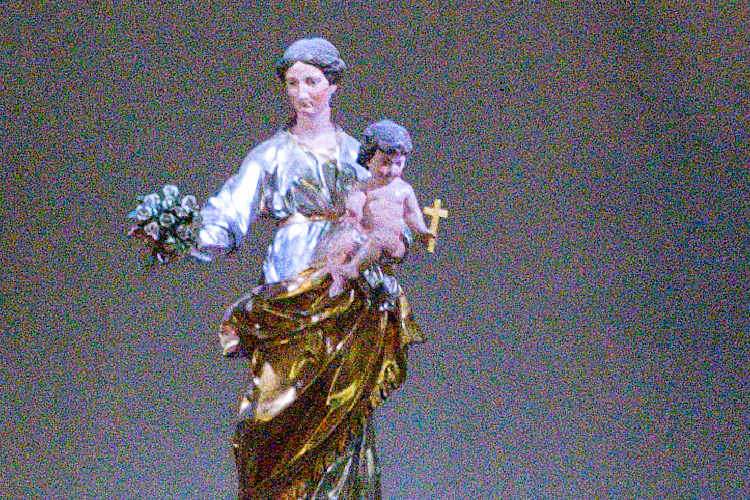
|
100% crop of raw file opened in PhotoLab 4 without noise reduction |
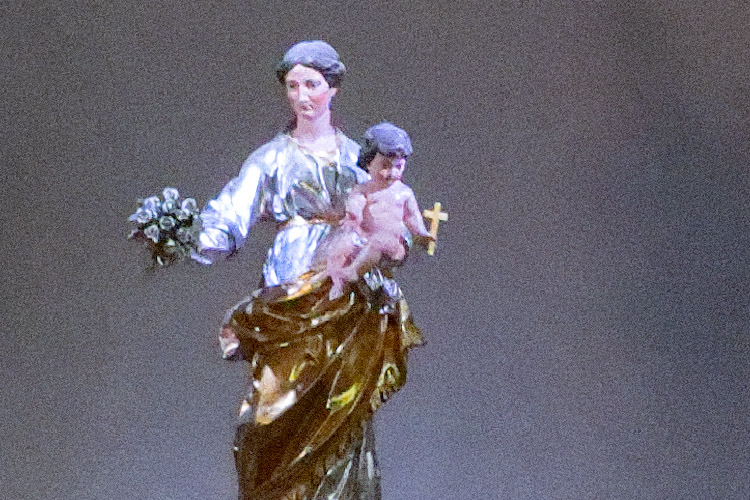
|
100% crop of raw file opened in PhotoLab 4 with HQ noise reduction |
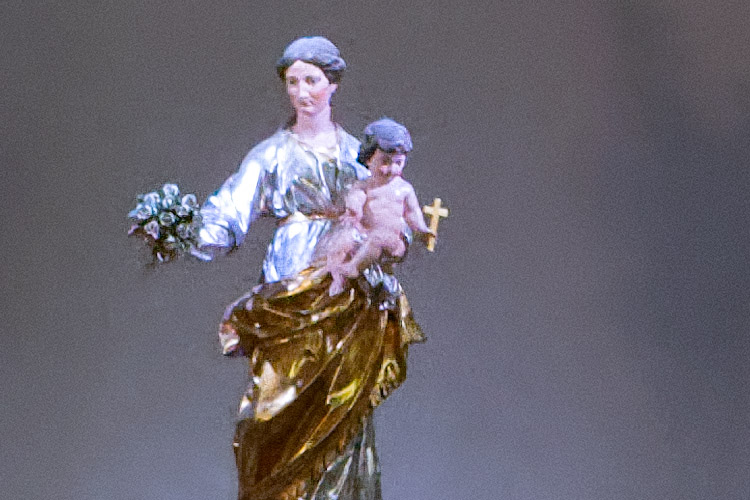
|
100% crop of raw file opened in PhotoLab 4 with PRIME noise reduction |
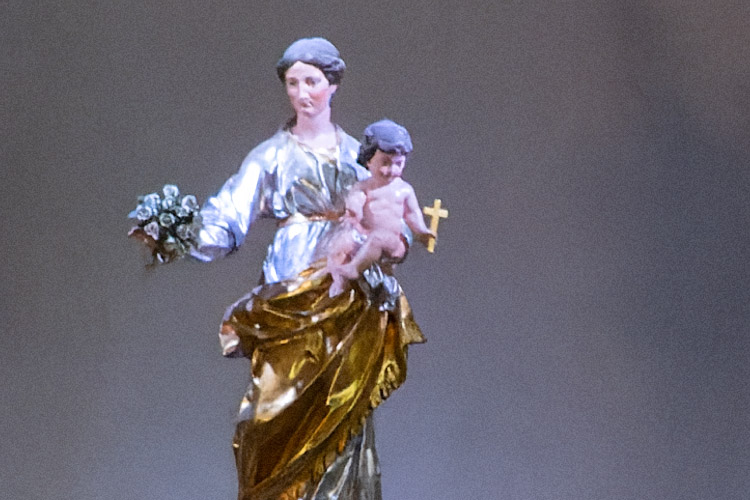
|
100% crop of raw file opened in PhotoLab 4 with DeepPRIME noise reduction |
While on a short trip to the North Carolina coast in July of 2017, we visited New Bern and Beaufort. As I recall, it was almost unbearably hot and humid, and we used every opportunity to cool off by entering air-conditioned environments. This was probably the main reason we ventured into the North Carolina Maritime Museum. It turned out to be an interesting place that was well worth a visit. I took this photo in the museum's library, and once again, I chose to use an area with text for comparison. The difference between PRIME and DeepPRIME is especially visible in the grain of the wood and the lettering on the magazines.
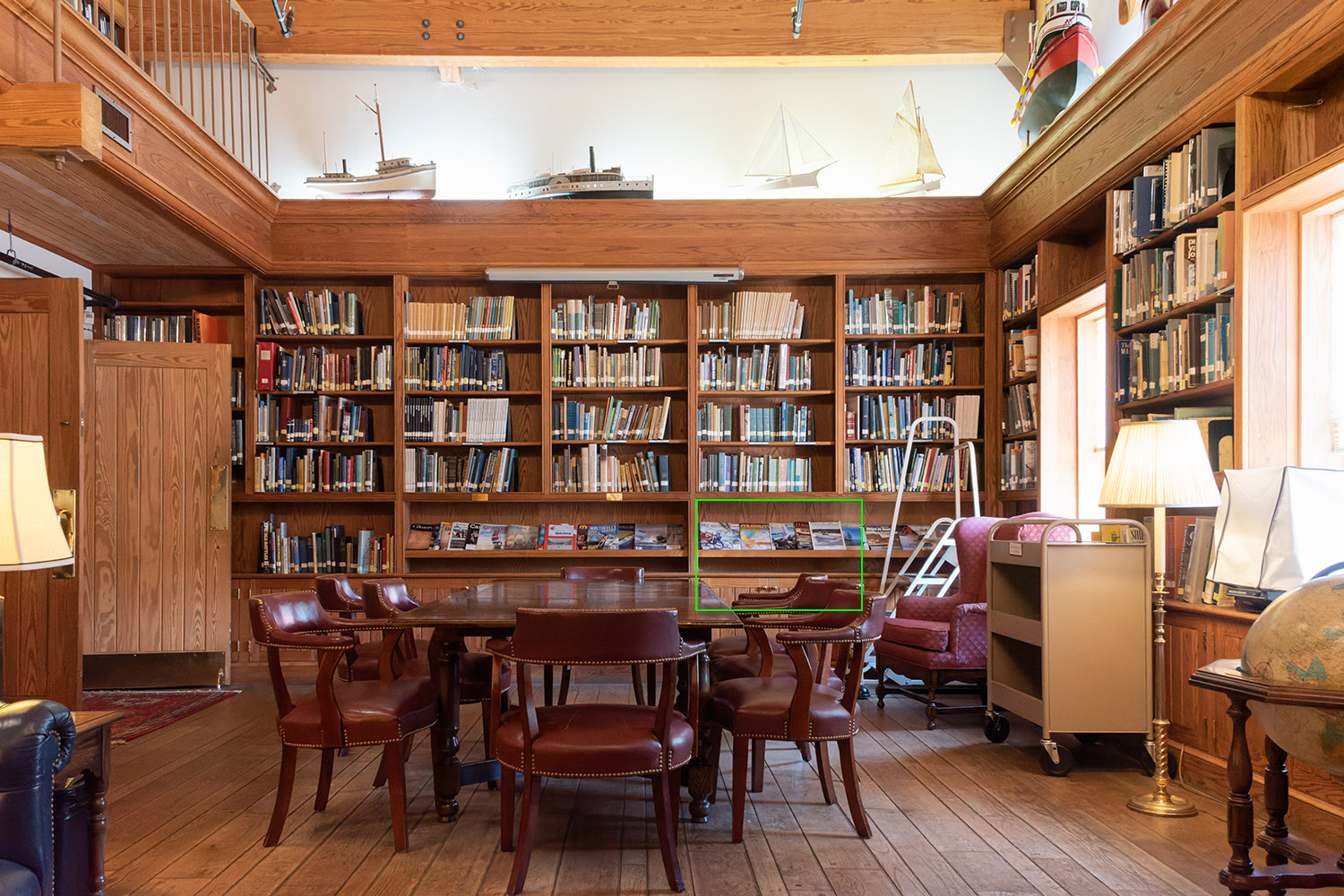
|
North Carolina Maritime Museum Library, Beaufort, NC, July 2017 |
ISO 10000 ● 1/30 ● ƒ/13.0 ● 32mm ● Exp. -⅔ |
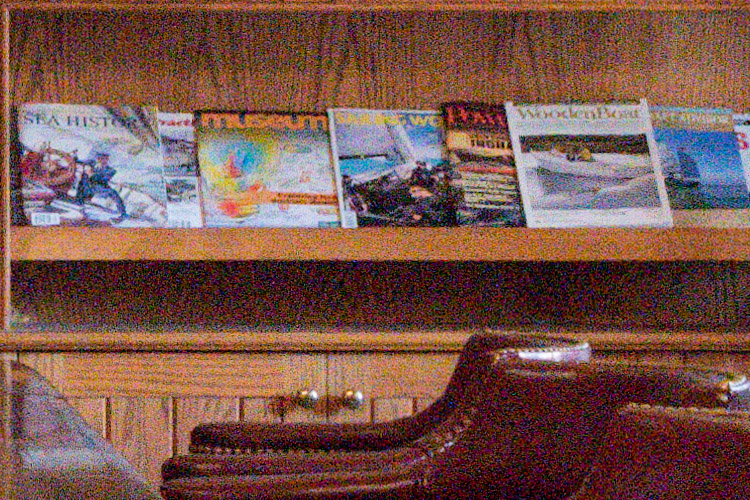
|
100% crop of raw file opened in PhotoLab 4 without noise reduction |
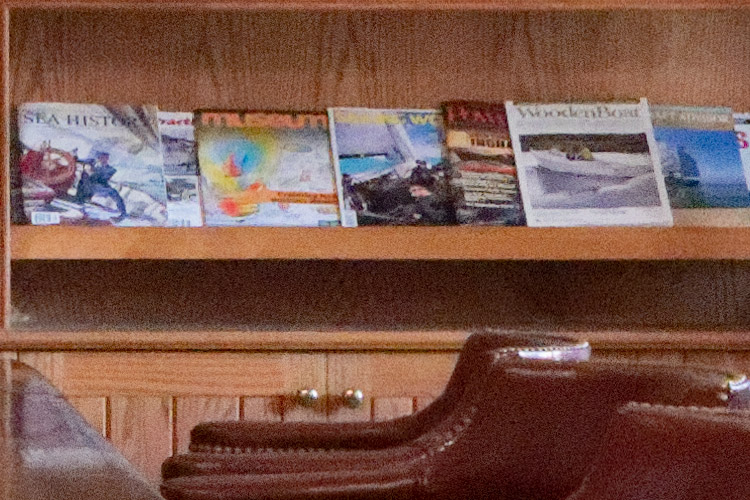
|
100% crop of raw file opened in PhotoLab 4 with HQ noise reduction |
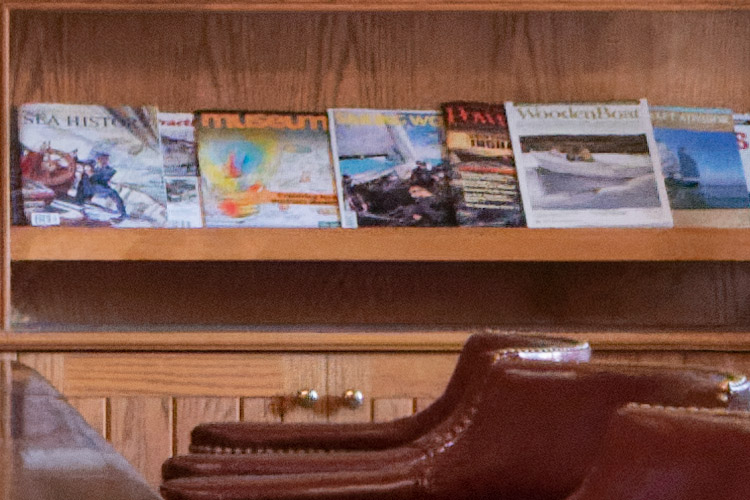
|
100% crop of raw file opened in PhotoLab 4 with PRIME noise reduction |
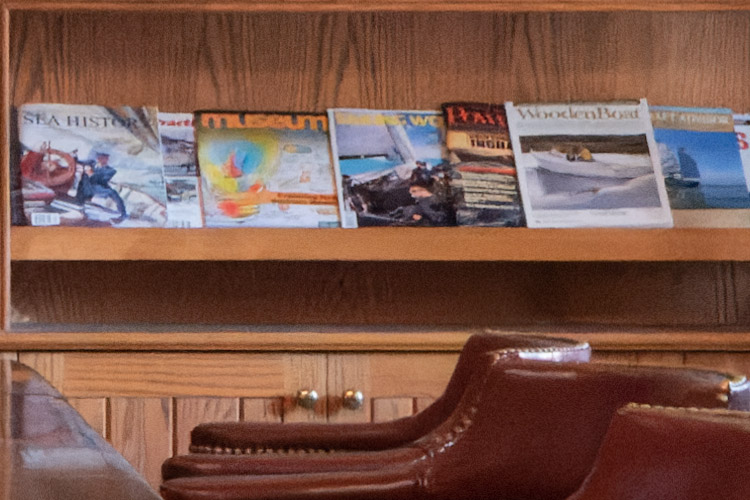
|
100% crop of raw file opened in PhotoLab 4 with DeepPRIME noise reduction |
Of course, DeepPRIME is not all there is to DxO PhotoLab 4. It is full-featured photo editing software that is extremely capable. DxO also sells the Nik Collection, a series of plug-ins (for Photoshop, LightRoom, and of course PhotoLab) that were originally published by Nik Software. These plug-ins are remarkably powerful and feature U-Point technology; they are an indispensable part of many people's photographic workflow. Finally, DxO markets DxO FilmPack, excellent software to give your images the look and feel of the film days, and DxO ViewPoint, software to control the geometry of your images, something especially important when using extreme wide-angle lenses. I own every one of these software titles, and I'm impressed by the quality processing DxO is capable of bringing to my images. I neither work for DxO, nor do I have any kind of ties with the company. I'm just a very satisfied customer and have been for many years.
The good news is that if you don't know PhotoLab or any other DxO product, you can download free evaluation versions from the DxO web site. These trial versions come with all features unlocked and give you 30 days to use the software with your own photos. If your camera uses a Bayer filter (most do), it is probably supported by DxO. In any case, you can check here. You don't risk anything by giving DxO software a try, and seeing what PhotoLab 4 can do with your high-ISO raw files may be just one of the ways the software will amaze you.
Happy shooting!
Home | Site Info | Family | The Area | Trips | France | Work | Rants | Photography | Odds & Ends
This page was last modified on January 1, 2021
Send feedback about this page to feedback@kiechle.com
https://www.kiechle.com/photography/deepprime/index.htm
(optimized for Retina display)
All contents © 1999-2025 The Kiechles